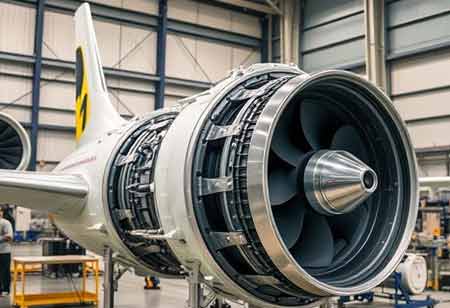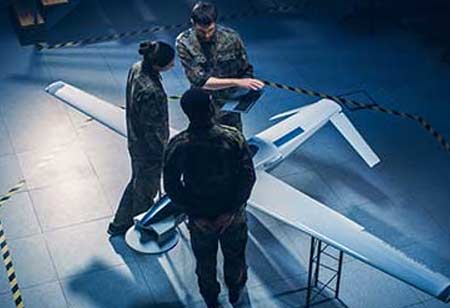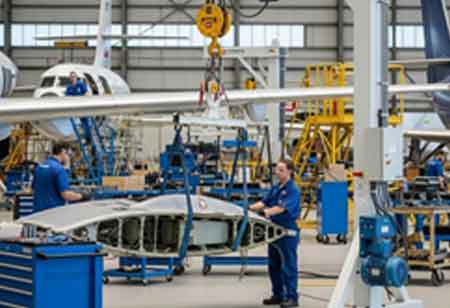Aircraft engines are among the most critical and expensive components of an aircraft. Given their complexity, weight, and fragility, transporting them requires specialized equipment designed to ensure safety, efficiency, and compliance with stringent aviation industry standards. One such crucial piece of equipment is the aircraft engine transportation stand.
These stands play a vital role in the aerospace industry by facilitating the safe handling, storage, and transportation of aircraft engines across maintenance, repair, and overhaul (MRO) facilities, airline hangars, and manufacturing plants. They protect expensive and delicate engines, preventing damage during transit. They ensure compliance with strict aviation regulations set by bodies like the FAA and EASA, reducing risks.
Innovations in Design and Materials
The most recent developments in aircraft engine transportation emphasize an orientation toward safety, efficiency, and flexibility features. Larger and more complex engines are developing within more powerful aircraft, thus demanding more robust, adaptable, and lightweight stands for transport.
The modern aircraft engines central to next-generation aircraft like the Boeing 787 or the Airbus A350 are significantly larger and heavier than their predecessors. Changes like these have been the main reason for developing specialized transportation stands that can securely handle these advanced engines without compromising safety. Manufacturers of engine stands have been implementing more substantial materials and advanced engineering designs to support these heavier and more delicate engines, ensuring they are adequately secured during any transport or maintenance activity.
Changing aircraft engine transportation from traditional steel to newer, lighter materials has become a new trend in the industry. Aluminum alloys and composites have gradually replaced steel stands, making it possible for these stands to have reduced hold weight without compromising their strength and durability. This becomes even more crucial in busy maintenance facilities with numerous engine transports daily. In addition, these materials are more resistant to corrosion, which is essential since the transport stands are exposed to vastly different environmental conditions.
Harnessing Digitalization for Sustainable Advancement
Enhanced changes in aircraft engine transportation make the advancement of material and design possible. These now include designs that have eliminated the rigidity of fixed frames to give way for highly adaptable models with adjustable heights and modular components. Flexibility is helpful in maintenance organizations that service different aircraft models. Adjusting adjustments would be as easy as using hydraulic or pneumatic systems, providing more precision and safety concerning engine-type requirements during transport.
The increasing application of digital technologies in aircraft engine transportation is a growing trend in the industry today. New stands now have sensors that give real-time data on the engine's condition during transport, such as vibration levels, temperature, and alignment. Such sensors can monitor the engine from time to time over its journey, informing them whenever any issues arise.
The information gathered by these systems can be used to anticipate probable occurrences, ensuring any necessary repairs or adjustments are made before they develop into more significant problems. With the continued digitization of the industry, more such smart stands are anticipated to make engine transport more efficient and data-based.
Sustainability is also one of the major driving forces in innovation in the aircraft engine transport stands industry. The increasing pressure on the aviation industry to reduce its environmental footprint has also become a challenge for manufacturers to develop more eco-friendly equipment. In addition to making the transportation stands easy to handle, the strength of their lightweight materials, such as carbon fiber and aluminum alloys, contributes to reducing overall weight and fuel consumption in transportation.
Sustainable practices are becoming more understood in the production and disposal of engine transport stands, emphasizing minimizing waste and including recyclable materials in the manufacturing process. Such changes will not only be beneficial toward sustainability. Still, they will also align with trends toward aviation, offering more eco-friendly solutions across the different areas of the industry, including aircraft design and ground operations.
Overcoming Challenges and Driving Innovations in Aircraft Engine Transport Stands
The aviation industry faces many challenges regarding the transport of air engine stands, particularly the need for standardization across the various types and sizes of engines used globally. As production costs increase, designing smaller or specialized stands becomes increasingly complex. Manufacturers must invest in research and development to create practical stands that are both cost-effective and space-efficient while also adhering to the safety and regulatory standards established by aviation authorities.
Aircraft engine transport stands will provide improved solutions for safety, operational efficiency, and sustainability. As the industry evolves to address the challenges of modern aircraft and engines, these stands will remain essential for maintaining the performance and longevity of the global aviation fleet.









